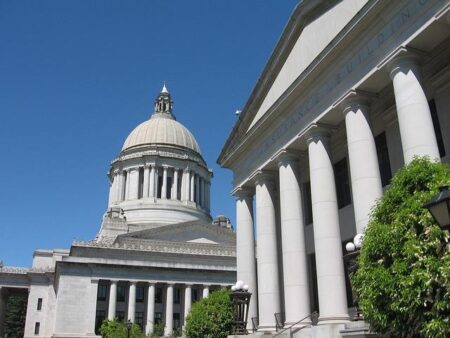As the 2025 academic year approaches, new data on college enrollment offers fresh insights into the evolving landscape of higher education in the United States. The Education Data Initiative has released comprehensive statistics revealing total enrollment figures alongside detailed demographic breakdowns, shedding light on trends that could shape policy and institutional priorities. This report provides a timely analysis of who is heading to college, highlighting shifts in age, race, gender, and socioeconomic status that reflect broader changes in access and opportunity across the nation.
College Enrollment Trends Reveal Shifts in Student Demographics
Recent data reveals a dynamic transformation in the makeup of college campuses across the nation. Enrollment figures for 2025 indicate a notable rise in diversity, with a significant increase in representation from underrepresented groups. Hispanic and Asian-American students have shown some of the highest enrollment growth rates, outpacing traditional majority demographics. Meanwhile, institutions are witnessing a gradual decline in enrollment among White students, a shift attributed to changing population trends as well as evolving social and economic factors. These patterns highlight a broader societal shift toward inclusivity and the growing accessibility of higher education.
Additionally, the landscape of enrollment by gender and age is also shifting. There is a growing proportion of non-traditional students, including adults returning to school and part-time learners. Female enrollment continues to outnumber male enrollment in most states, reinforcing long-term trends. Below is a snapshot of enrollment changes by demographic group from the latest dataset:
| Demographic Group | 2024 Enrollment (%) | 2025 Enrollment (%) | Change |
|---|---|---|---|
| Hispanic | 19.8 | 22.5 | +2.7% |
| Asian-American | 7.4 | 8.2 | +0.8% |
| White | 52.3 | 49.6 | -2.7% |
| Non-traditional Adults | 15.0 | 17.1 | +2.1% |
Analyzing Enrollment Rates by Race Gender and Socioeconomic Status
Recent data highlights pronounced disparities in college enrollment across different demographic groups, revealing complex intersections of race, gender, and socioeconomic status. While female students consistently outnumber male students in higher education enrollment, this gap varies significantly by race. For example, enrollment rates among Asian and White females remain notably higher—reaching nearly 72% and 65% respectively—compared to their male counterparts. Conversely, enrollment among males in underrepresented groups such as Black and Hispanic communities lags behind, underscoring lingering barriers that may include access to resources, mentorship, and preparatory opportunities.
Socioeconomic status further compounds these enrollment trends, with students from low-income households facing the steepest challenges. According to the latest figures:
- Low-income Black males enroll at rates 15% lower than their high-income peers.
- Hispanic females from middle-income families show a more encouraging upward trend in enrollment, suggesting targeted support initiatives are yielding results.
- White students across economic levels generally maintain higher enrollment rates, though gaps remain within certain rural and underbanked regions.
| Demographic | Male Enrollment (%) | Female Enrollment (%) | Gap (%) |
|---|---|---|---|
| Asian (High Income) | 68 | 72 | 4 |
| Black (Low Income) | 34 | 45 | 11 |
| Hispanic (Middle Income) | 42 | 50 | 8 |
| White (Mixed Income) | 55 | 62 | 7 |
Impact of Economic Factors on College Attendance Patterns
Fluctuations in the economy have consistently shaped the landscape of higher education enrollment, influencing students’ decisions on whether and where to attend college. During economic downturns, there is often an uptick in enrollment as individuals seek to improve their job prospects through further education. Conversely, in times of economic growth, some prospective students opt to enter the workforce directly, perceiving immediate employment as more viable than investing time and money in college. Additionally, rising tuition and living costs linked to inflation tend to discourage low- to middle-income families from enrolling their children, widening the gap between socioeconomic groups.
Key Economic Factors Affecting Enrollment Trends:
- Tuition Inflation: Steady increases in tuition fees alter affordability and influence demographic shifts in applicant pools.
- Employment Rates: Higher job availability can reduce college attendance, particularly for vocational and non-degree pathways.
- Financial Aid Availability: Changes in government and institutional aid policies impact students’ ability to afford education.
- Household Income Variations: Fluctuations in family earnings determine access to private colleges versus public institutions.
| Economic Indicator | Effect on Enrollment | Demographic Most Impacted |
|---|---|---|
| Inflation Rate | Decreases enrollment due to affordability issues | Low-income families |
| Unemployment Rate | Raises enrollment as job market tightens | Recent high school graduates |
| Financial Aid Budget | Boosts enrollment through increased accessibility | Minority students |
Policy Recommendations to Increase Access and Equity in Higher Education
Expanding access to higher education necessitates targeted policy measures that address the systemic barriers faced by underrepresented communities. To foster equity, funding formulas should incentivize colleges to increase enrollment among low-income and minority students by allocating resources based on demonstrated need and outreach effectiveness. Additionally, holistic admissions criteria that go beyond standardized test scores can better capture the diverse potential of applicants, reducing biases that disproportionately affect marginalized groups.
Key policy interventions include:
- Implementing need-based scholarship programs with streamlined application processes.
- Enhancing support services, such as mentorship and academic advising, for first-generation college students.
- Promoting partnerships between high schools and colleges to improve college readiness in underserved areas.
- Establishing accountability standards for institutions to meet enrollment and retention goals for underrepresented demographics.
| Policy Area | Focus | Impact Metric |
|---|---|---|
| Financial Aid Reform | Need-Based Scholarship Expansion | +15% Enrollment of Low-Income Students |
| Admissions Practices | Holistic Criteria Implementation | +10% Minority Enrollment |
| Support Services | First-Gen Student Programs | +12% Retention Rates |
| High School Partnerships | College Readiness Initiatives | +8% High School Graduates Attending College |
In Summary
As the landscape of higher education continues to evolve, the 2025 college enrollment statistics provide valuable insights into shifting demographics and overall trends. Understanding these patterns is crucial for policymakers, educators, and institutions aiming to address emerging challenges and opportunities. Continued monitoring and analysis will be essential to ensure that access to quality education remains equitable and responsive to the needs of a diverse student population. The Education Data Initiative will keep tracking these developments to inform stakeholders and guide future decisions in the realm of college enrollment.

![2025 College Enrollment Trends: Total Numbers and Demographic Breakdown College Enrollment Statistics [2025]: Total + by Demographic – Education Data Initiative](https://news-usa.info/wp-content/uploads/2025/10/13504-college-enrollment-statistics-2025-total-by-demographic-education-data-initiative-768x577.jpg)


